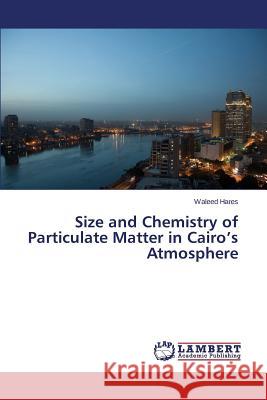Size and Chemistry of Particulate Matter in Cairo's Atmosphere » książka
Size and Chemistry of Particulate Matter in Cairo's Atmosphere
ISBN-13: 9783659463051 / Angielski / Miękka / 2014 / 200 str.
This book describes the work carried out by the author to characterise suspended particulate matter (SPM) in Cairo's atmosphere. The TSP (total suspended particulate) and the size fractionated PM10 (inhalable particulate matter) were collected at an urban area in Cairo. The particulate matter collected at each size category was then chemically analysed for major water-soluble species (sulfates, nitrates, chlorides, and ammonium) and heavy metals (lead, nickel, chromium, manganese, and zinc). The annual mean PM10/TSP percentage was found to be 27.28% which indicates that particulates in Cairo's air are characterised by high coarse size fraction, possibly due to the surrounding deserts. The annual mean concentrations of PM10 and PM3 were found to be significantly higher than the standards given by WHO and USEPA. This indicates high levels of fine particulate matter in Cairo's air which are serious hazardous materials that pose long-term risk to the residents' health. The concentrations of Pb, Mn, and Cr in the fine fractions were lower than the safe limits set by WHO, while fine fractions' Ni and Zn displayed dangerously high concentrations.
This book describes the work carried out by the author to characterise suspended particulate matter (SPM) in Cairos atmosphere. The TSP (total suspended particulate) and the size fractionated PM10 (inhalable particulate matter) were collected at an urban area in Cairo. The particulate matter collected at each size category was then chemically analysed for major water-soluble species (sulfates, nitrates, chlorides, and ammonium) and heavy metals (lead, nickel, chromium, manganese, and zinc). The annual mean PM10/TSP percentage was found to be 27.28% which indicates that particulates in Cairos air are characterised by high coarse size fraction, possibly due to the surrounding deserts. The annual mean concentrations of PM10 and PM3 were found to be significantly higher than the standards given by WHO and USEPA. This indicates high levels of fine particulate matter in Cairos air which are serious hazardous materials that pose long-term risk to the residents health. The concentrations of Pb, Mn, and Cr in the fine fractions were lower than the safe limits set by WHO, while fine fractions Ni and Zn displayed dangerously high concentrations.











